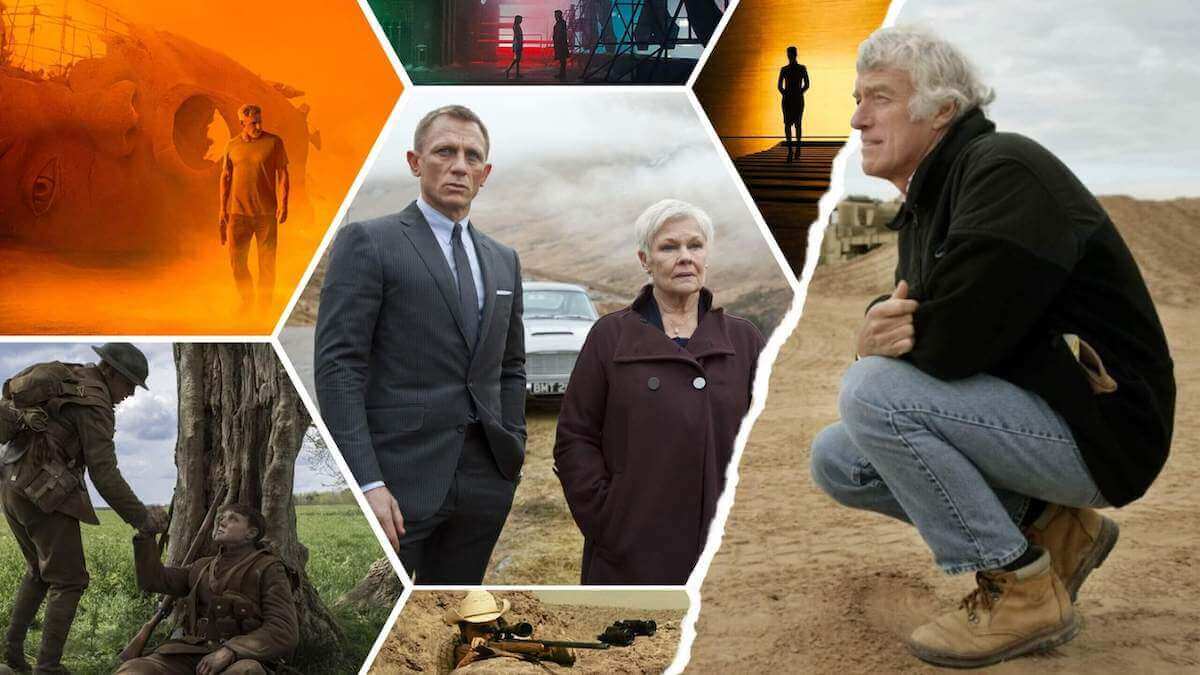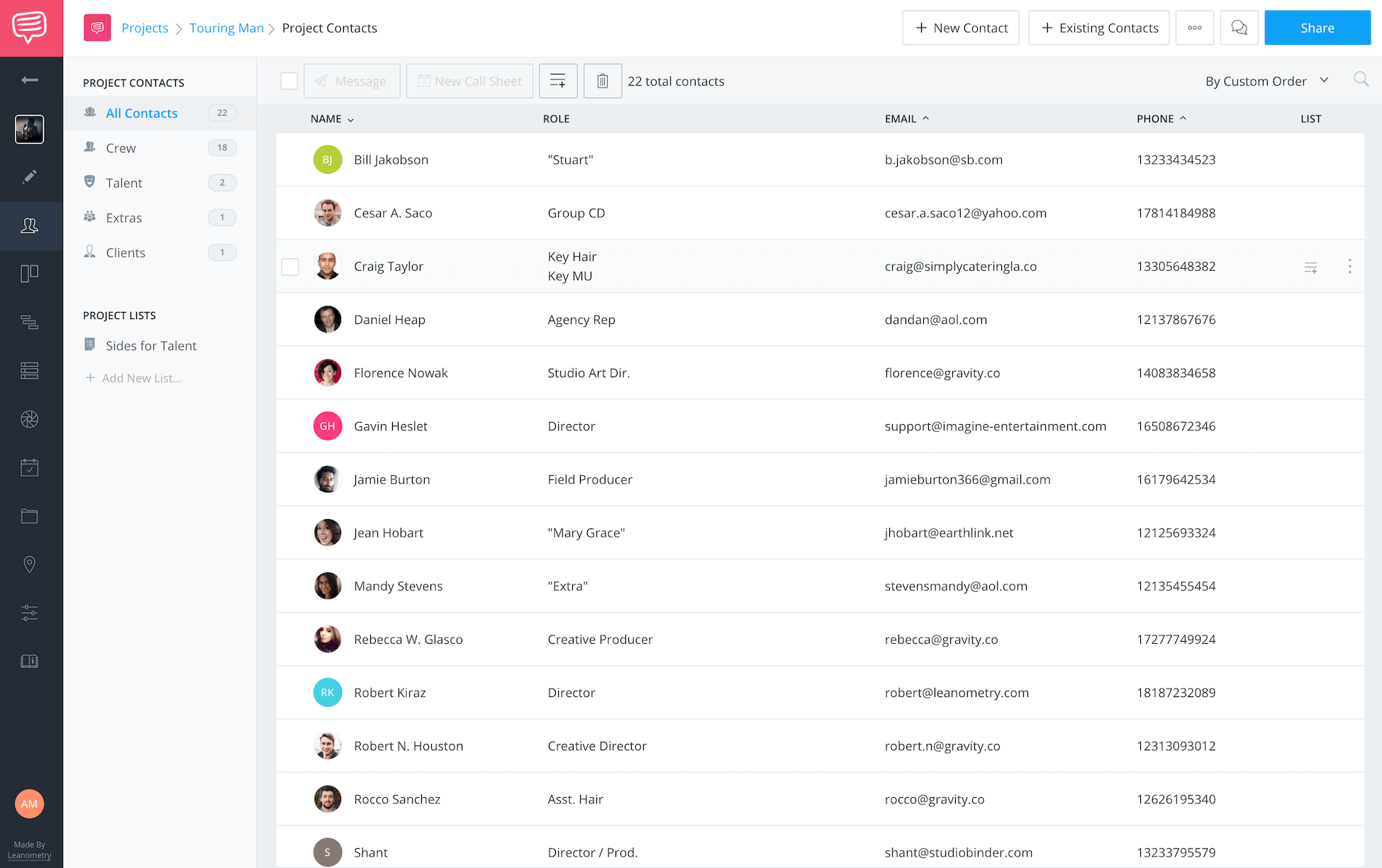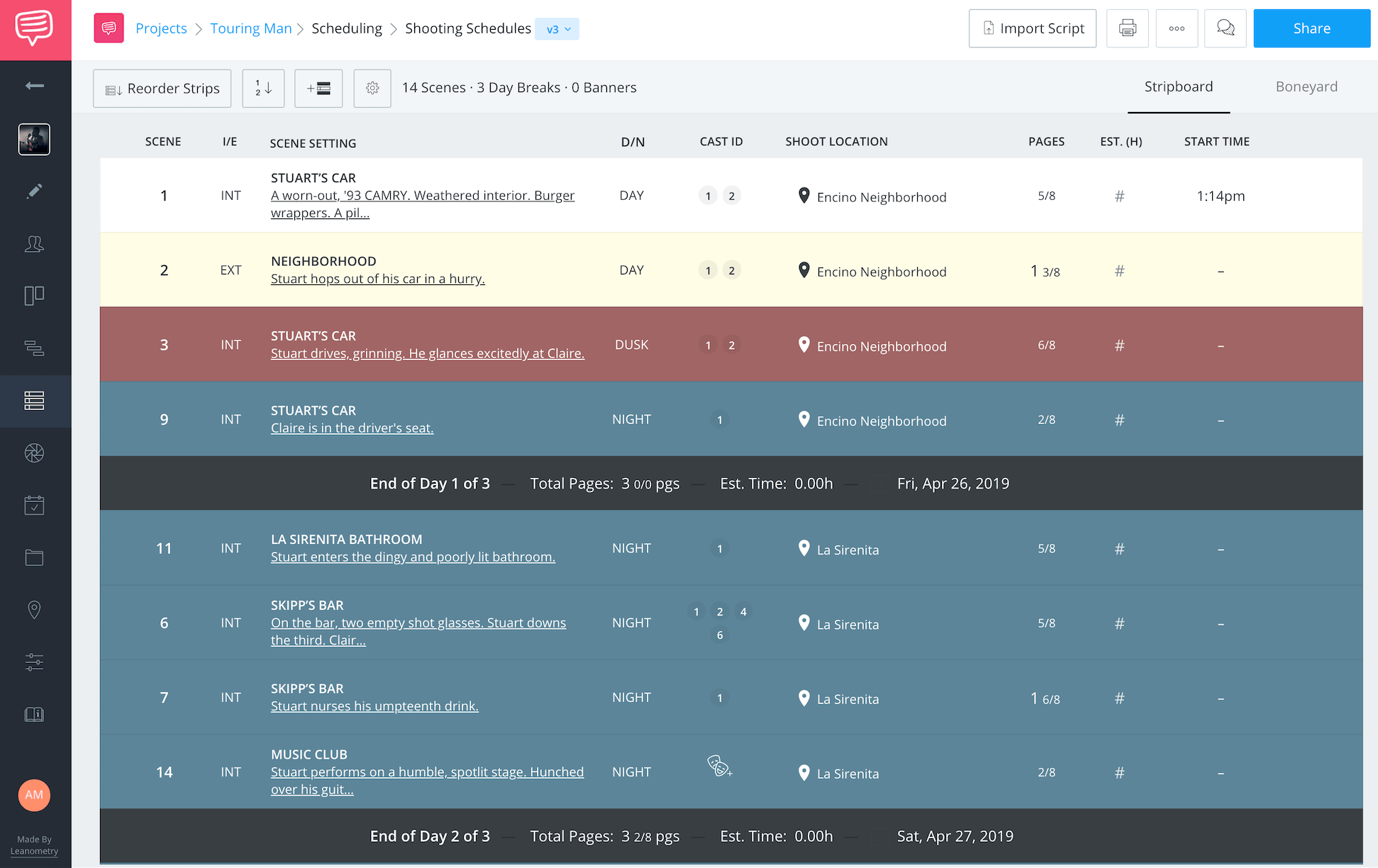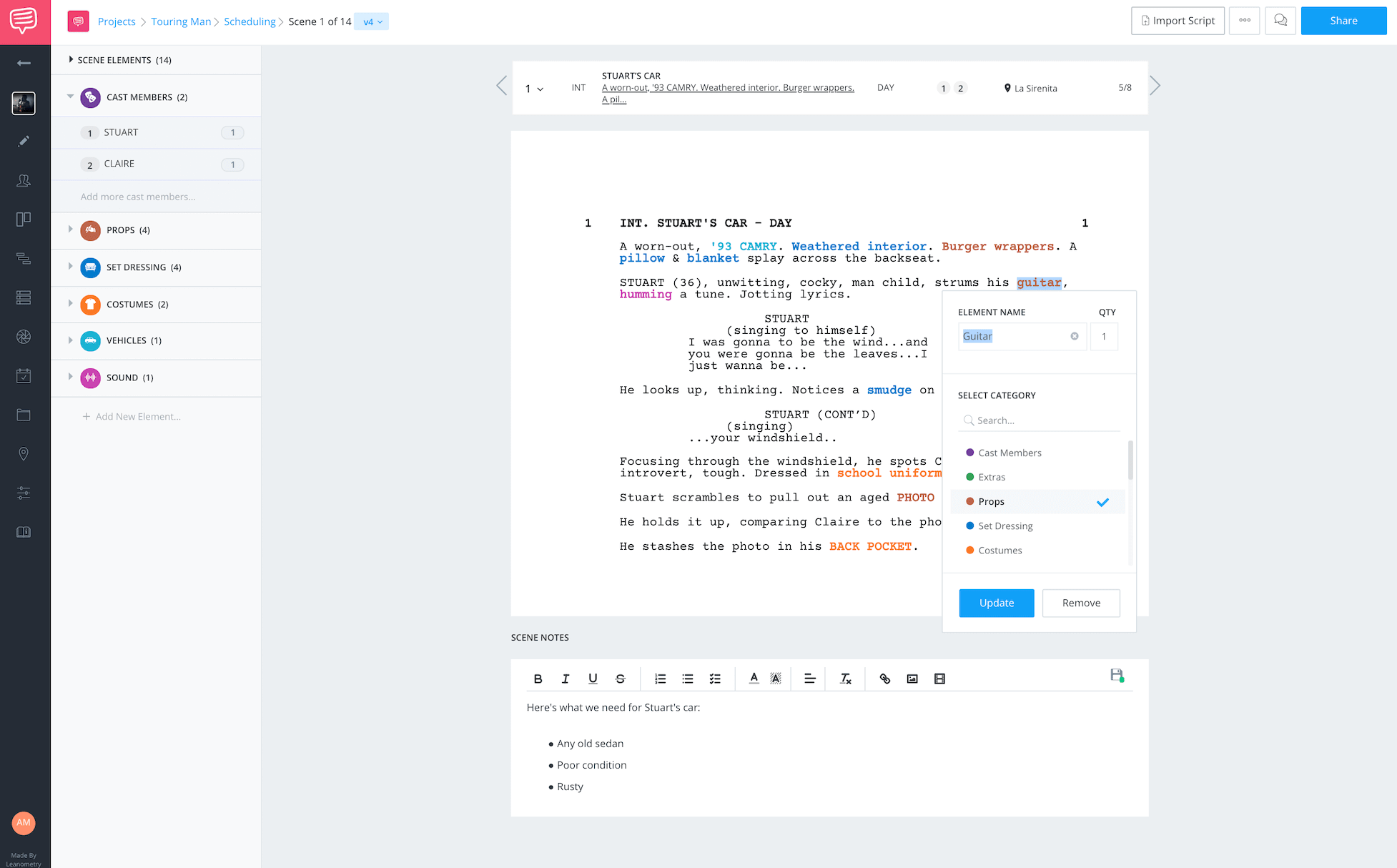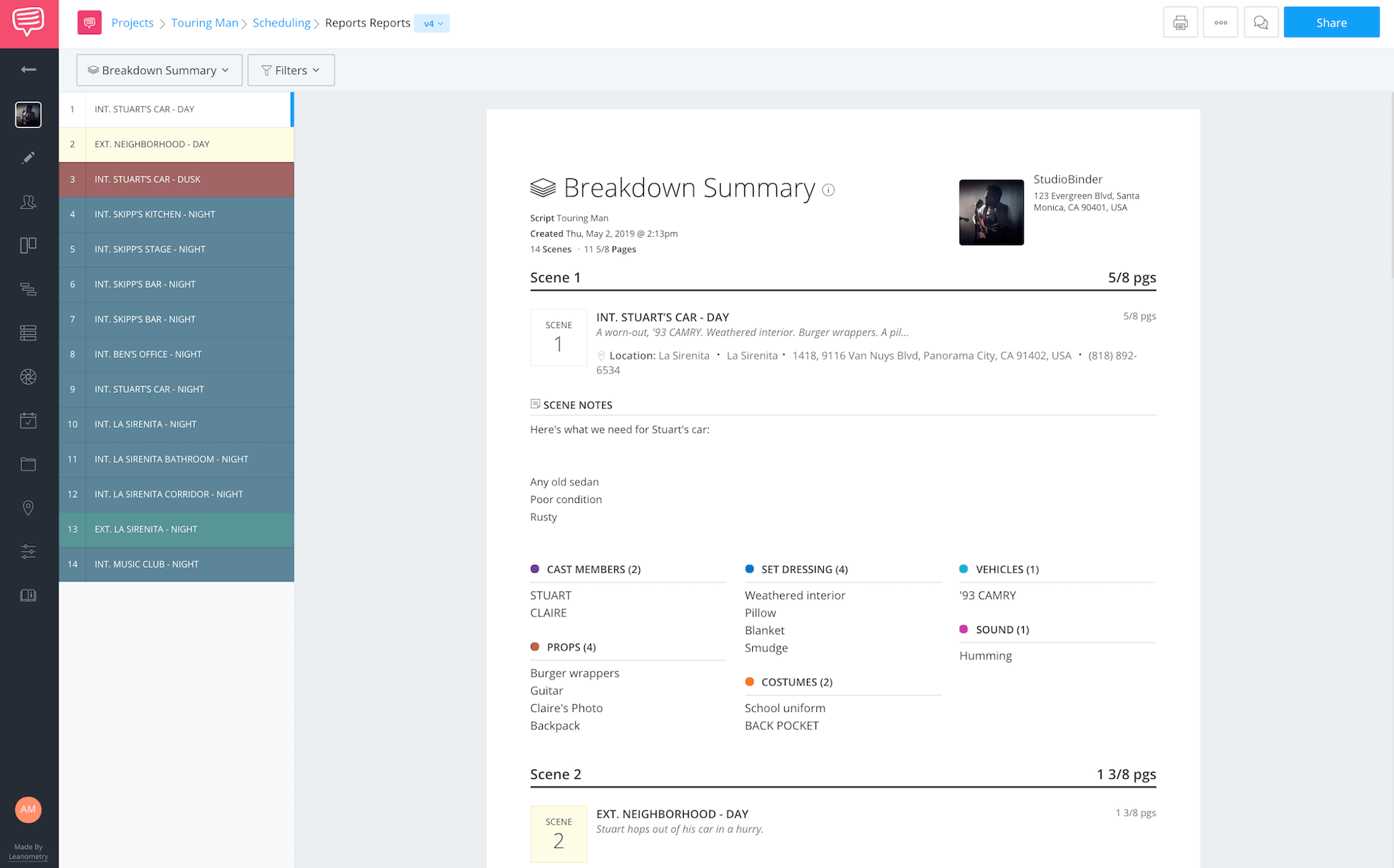I
n the process of video production, you’ll eventually need to start location scouting. But considering permits, fees, and logistics, it can be daunting to find locations that work for your budget. But the importance cannot be overestimated.
Worry not! There is hope. You don’t need a Hollywood budget to get good locations. What you need is to keep a few things in mind before you start your location scouting. Today we’ll show you a few pointers that will get you ready to finalize the locations for your shoot.
Choose Which Region is Best
Optimal areas for location scouting
I’ve been able to shoot in difficult spots without breaking the bank. These include atop a midtown Manhattan skyscraper, in the hold of a tall ship, and even a mortuary!
If you’re about to begin location scouting, knowing how to plan a project with locations in mind makes for a better film and a happier crew.
Watch below for more on this.
Location (and tech) scout like a professional • Subscribe on YouTube
Before we get into the minutiae of location scouting, it’s important to be reminded that the region in which you’re filming will impact which of these tips will apply to you.
If you film in a busy public place in Los Angeles, for example, you can expect that someone from the city will stop by your set and ask to see your permit:
First-hand knowledge of location necessities
If you don’t have a permit, the police can shut down your shoot, and in extreme situations, can confiscate your production gear!
On the other hand, the suburbs of Boston is not an active “filming region” the way that Los Angeles is. So formal permits and protections aren’t as crucial.
When a filmmaker or producer plans a movie with locations in mind, the first step is to establish if you’re in an active “filming region.” Then assess which of the following tips will apply to you.
In addition to location scouting, there will be other steps in the entire pre-production process that can be overwhelming. It's helpful to have a production management software like StudioBinder to keep your production in order.
As you scout, gather all of your contact and location information in StudioBinder's contact page.
Location checklist, shot list, scheduling and production calendars can all be done using the web-based, seamless production workflow in StudioBinder.
Related Posts
Location Scout the Familiar
Scouting w/ who you know
You should always begin location scouting by assessing your production’s contacts. Do you know anyone who controls a filming location that might suit your production?
Remember that most people don’t know how to plan a movie shoot. So when you ask to film on their property, most won’t know what it entails.
You’re more likely to get a positive response (or, at least, a conversation) out of the people you know than the people you don’t.
Remember, this may be your host’s first time seeing the process of video production. It can be overwhelming. No one expects a film production to take over the way it does.
If you don’t have any inside connections, find a location scout database that lets you filter by cost and production type.
Free downloadable bonus
Download FREE Location Tech Scouting Checklist
Are you getting close to your next location tech scout? We've put together a checklist to help you identify the key elements to look out for before you actually lock down the location. Download our FREE, printable checklist PDF today!
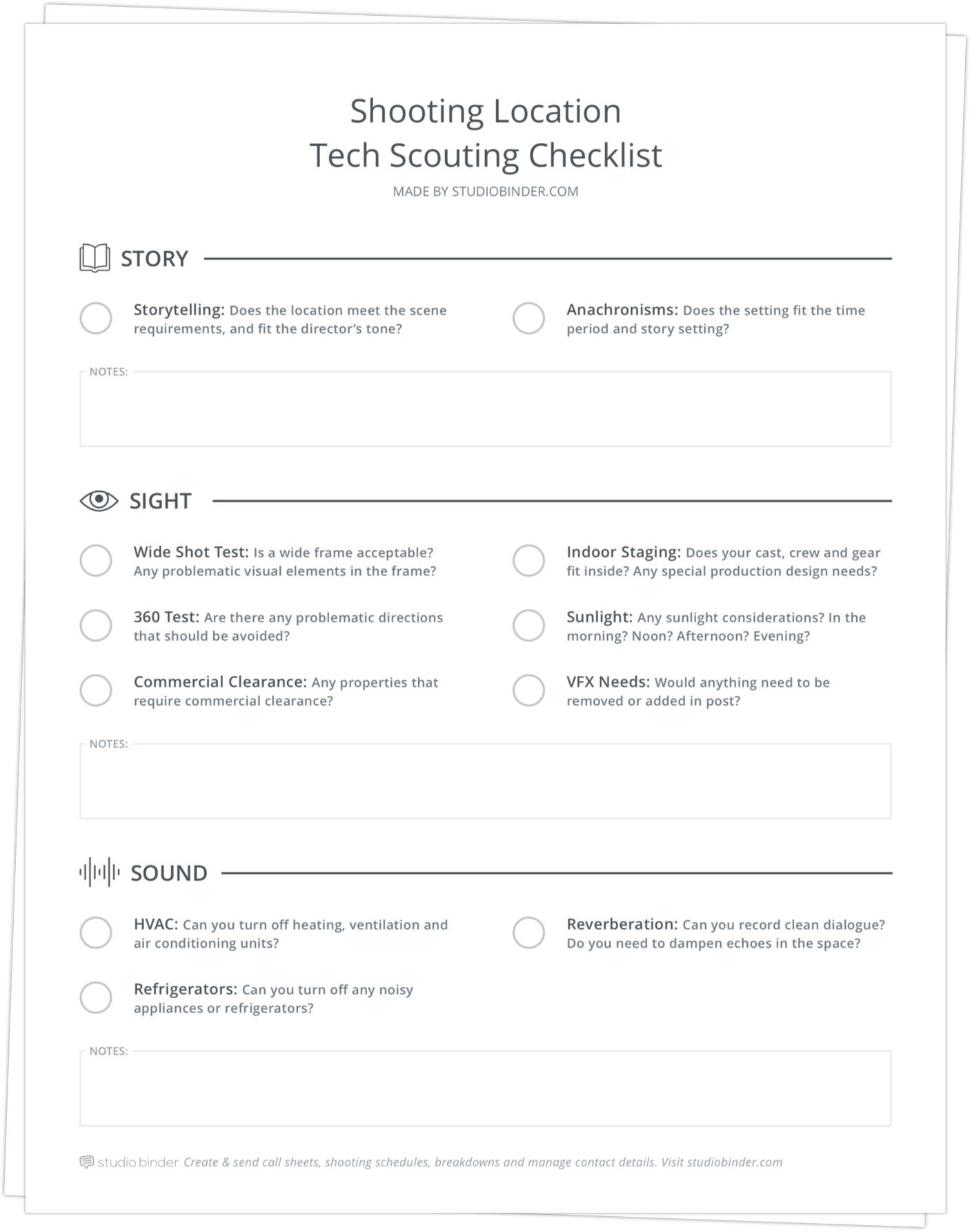
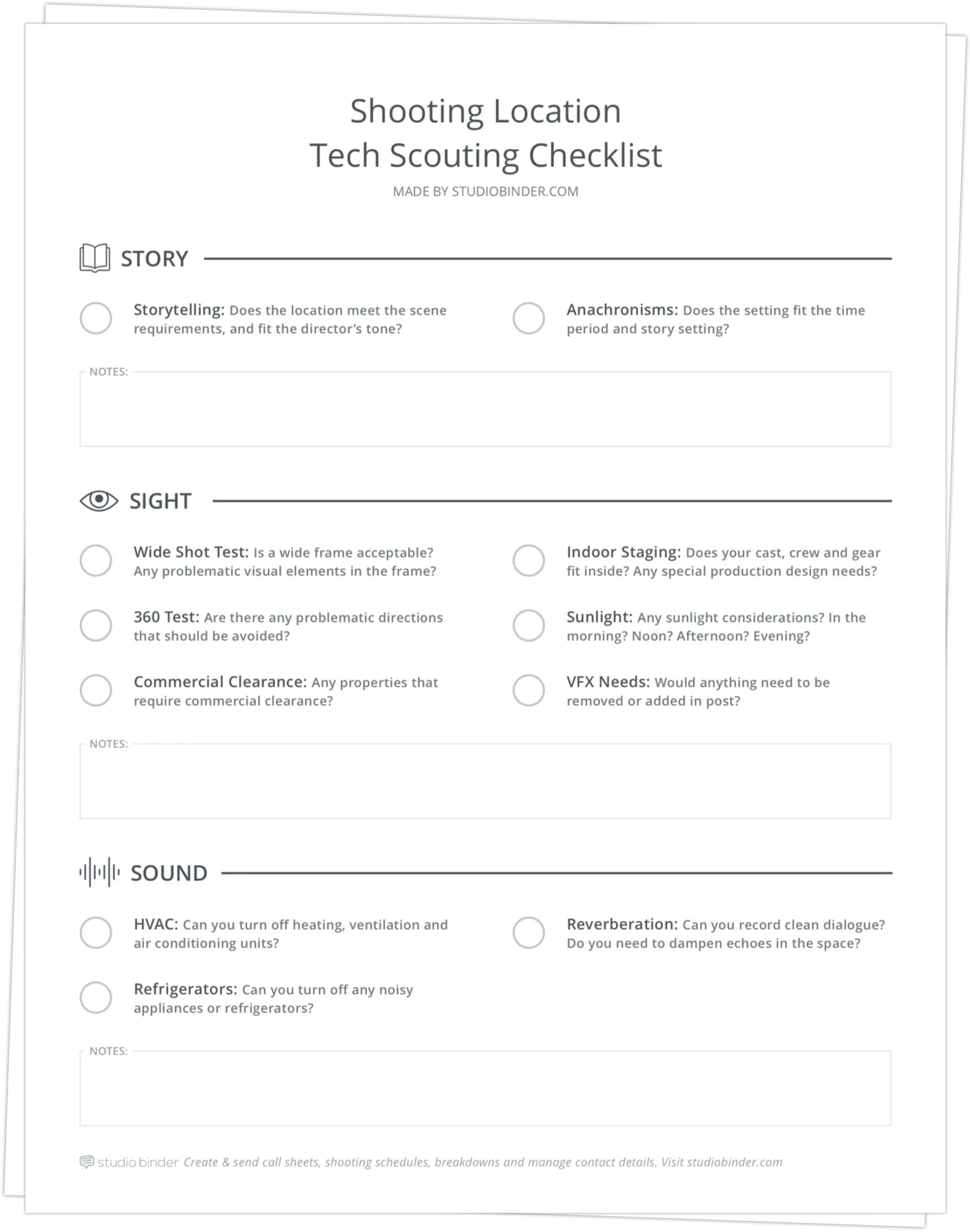


Scout for the Story
Don't short change the story
Location scouting is a critical piece of how your story will be told. Work with your director to make sure that your location scouting aligns with story requirements. If you need some ideas for stories you can actually produce.
You may be tempted to go with an available resource. Perhaps your cousin has a vacation home he’s willing to let you borrow.
But if the vacation home is painted in three shades of pink, and you’re shooting a short about a tough biker gang, it might not work. Even if it’s free.


Barbie’s house is not exactly a dream for a biker gang
In situations like this, you can either turn it down or change the story to fit the location. But always avoid changing your location to fit the story. This is a typical Hollywood technique, but it’s impractical on a short film budget.
A good location scout website should provide clear images for a given location. Just check with the host if anything has changed since their last update.
Related Posts
All in One Place
Shoot everything in one location
It’s important to know how to plan a movie shoot with as few locations as possible. In fact, shooting project all in one place is ideal.
Miss Julie is an example of a film shot all in one location
Try to find filming locations to can double as others too.
This can be tricky in some cases, but it’s worth your time. It limits company moves and helps with the overall process of video production.
A short film I once produced required two different sets. We were fortunate to find a filming location with a room that had different colored walls.
The different colors suggested entirely different locations. So we could shoot one scene against one wall and then turn the camera around to shoot the other.
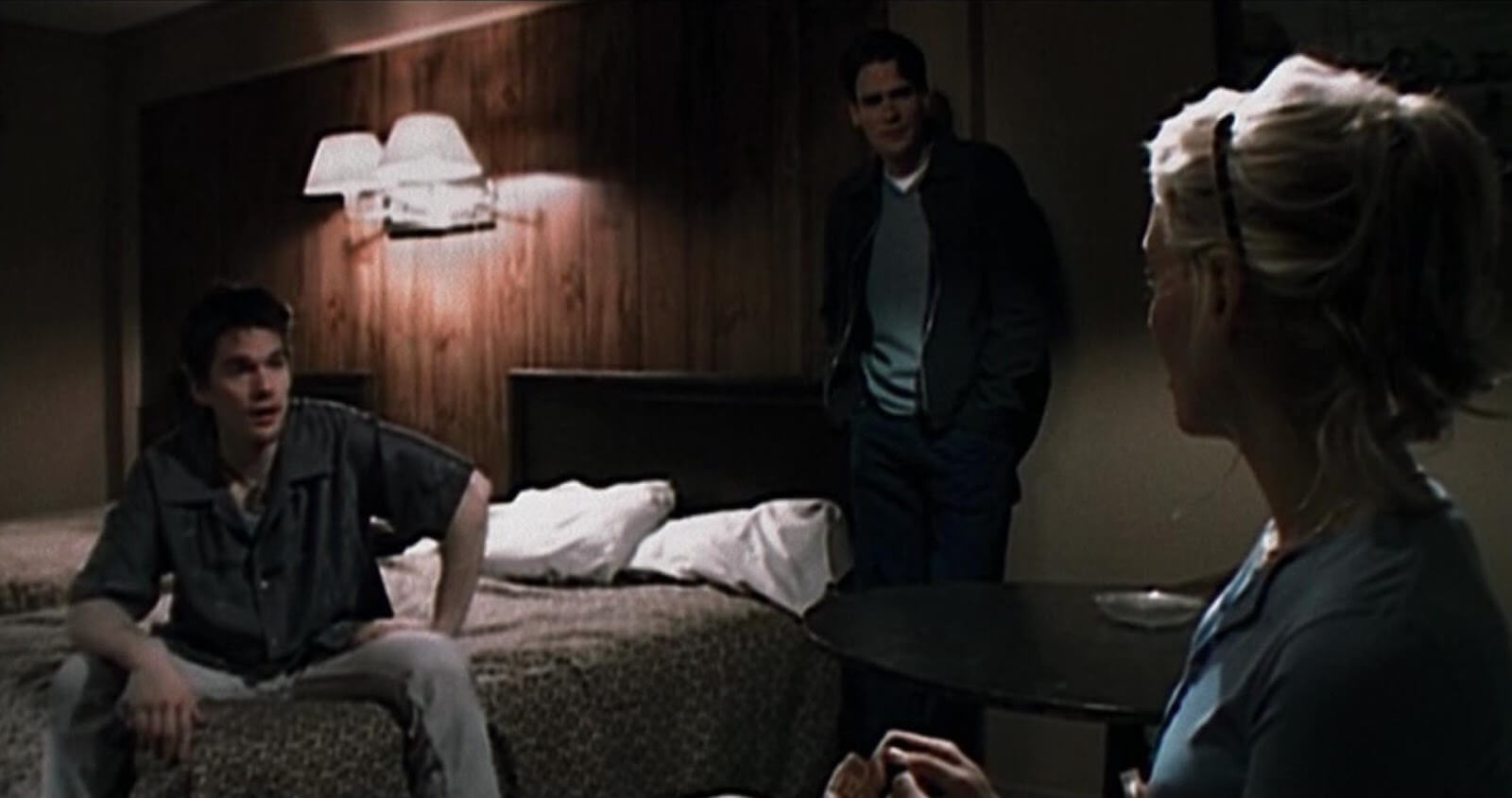

Tape takes place in a single room
This also makes it insanely easier on your shooting schedule and when building out a budget. Studiobinder organizes your scenes into strips on a stripboard and you can easily assign your locations to them.
You can then drag and drop each strip to schedule most effectively and what works best with your budget. Typically, it's helpful to shoot all of the scenes that are in the same location.
Related Posts
Behind the Camera
Remember the needs of the crew
Production isn’t just the stuff that happens in front of the lens. Location scouting for film requires accommodations your entire production.
When it comes to location needs, there is a lot to consider. So you may want to bring a checklist with you when you scout locations to make sure you don’t miss any critical logistical detail.
Sometimes, the best location for your short film is still not 100% ideal. For my short, The Pirate Captain Toledano, we had very limited options for tall ships we could afford.
The ship that we chose, “The Spirit of Dana Point,” had a beautiful captain’s cabin that required only minimal set dressing to look authentic for the film. But the cabin was very, very small.
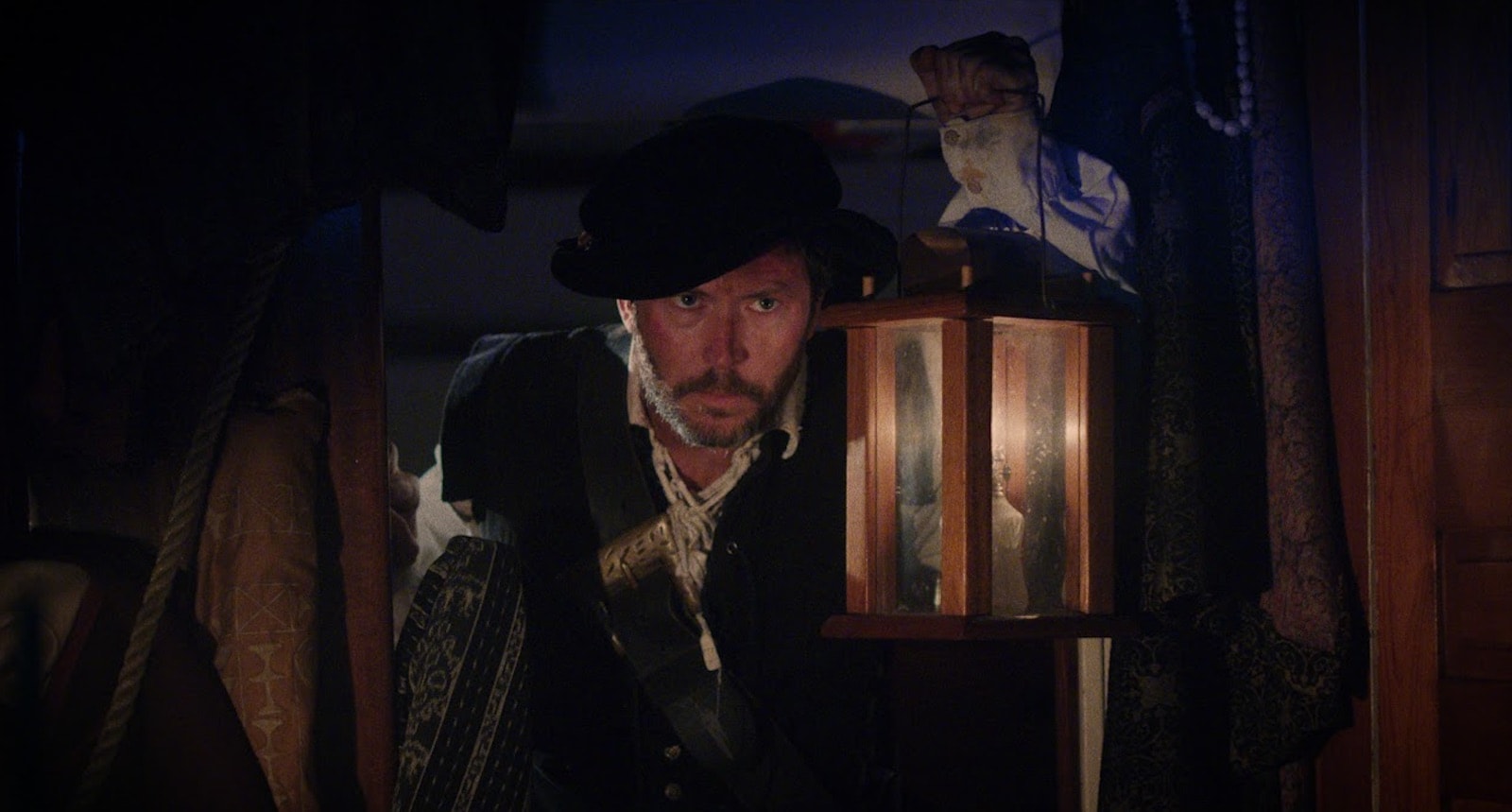

The Spirit of Dana Point in The Pirate Captain Toledano
It was so small that we couldn’t fit more than one department at a time into the room. Typically the art department would dress the set while the camera department prepped the camera. But we had to do each of these tasks as separate steps. It took us three times longer than usual to get our first shot up!
You must know how to plan a movie around your location limitations. First, anticipate how these will impact the production, then adjust your schedule, budget and crew accordingly.
Script Breakdowns When Scouting
The importance of a breakdown
Completing a script breakdown yields all the elements you'll need to procure for your shoot. It includes the cast members, set dressings, and props needed for each scene.
A thorough breakdown summary can help prepare you for location scouting.
Use a film project management software to generate these reports. This way, when you tag elements in the script, it builds the reports automatically.
Script breakdowns are vital to your production
Let's use StudioBinder's script breakdown feature to do this.
Here is a scene from a feature we did called Touring Man.
Now notice the report that is generated once you break down the scene.
Filmmakers no longer have to grab a multiple choice of colored pens or sharpies, scribble and highlight by hand, over weeks of pre-production, production planning has moved into the modern era.
Then, I can easily know what I’ll need from a given location. This ranges from the set dressing to the equipment that will need to fit in the space.
This arms you with a list of requirements. When you find a location to use, you can ask the owner if it will fulfill each one.
Related Posts
Scouting w/ Something to Offer
Scouting and bartering
Here in Los Angeles, it can be nearly impossible to find a good filming location without having to pay a location fee.
But outside of major filming areas, the allure of Hollywood is sometimes enough to get a location for free. You may be tempted to accept the gift of a free location and marvel at your good fortune.
Don’t!
Most people don’t know how taxing the process of video production can be — even for one scene. So always pay something if you can.
Even if you can’t, offer something in exchange for the use of the location. You can offer publicity — social media posts featuring your production at the location. Or you can offer services — mowing their lawn for a month.
Remember, the process of video production relies on your host’s compliance. The last thing you want is your host to pull the plug during a shooting day!
Branding Deals for Locations
Product placement
Although common, I urge every filmmaker to be careful with product and brand placement deals.
For example, say you talk to a restaurant owner about filming a scene. He might request that the restaurant name appears on-screen in your film.
Sure, you could throw in an establishing shot before the restaurant scene! Easy! But what if the restaurant scene gets cut from the film?
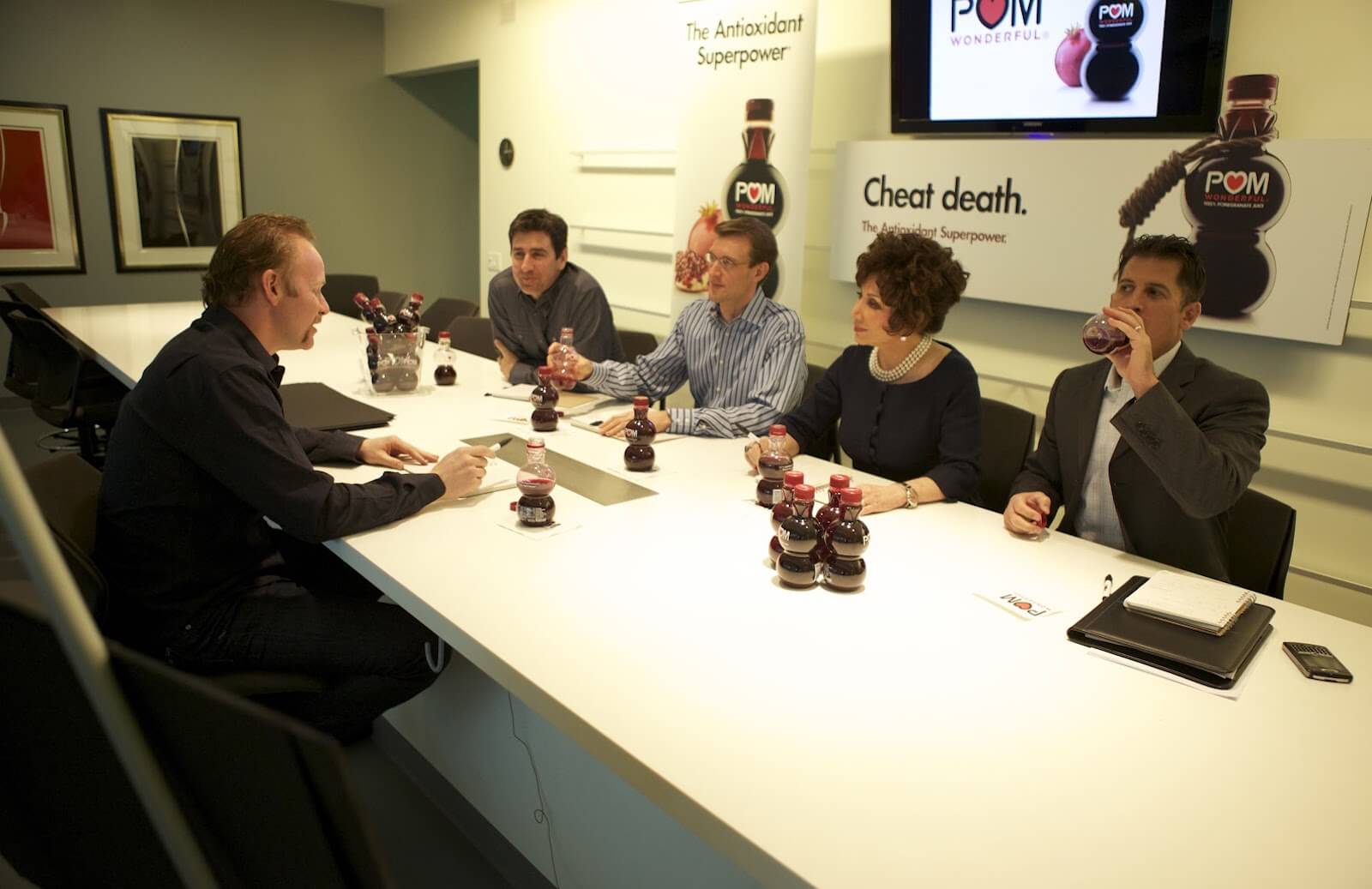

Product placement is a subject of hit documentary Super Size Me
The establishing shot is your “payment” to the location owner. How will you deliver on that “payment?”
Brand placement deals can be powerful incentives to get location owners to waive location fees, especially outside of a major filming region. But they do risk backing you into a creative corner when it comes to actually integrating those brands into your film’s final cut.
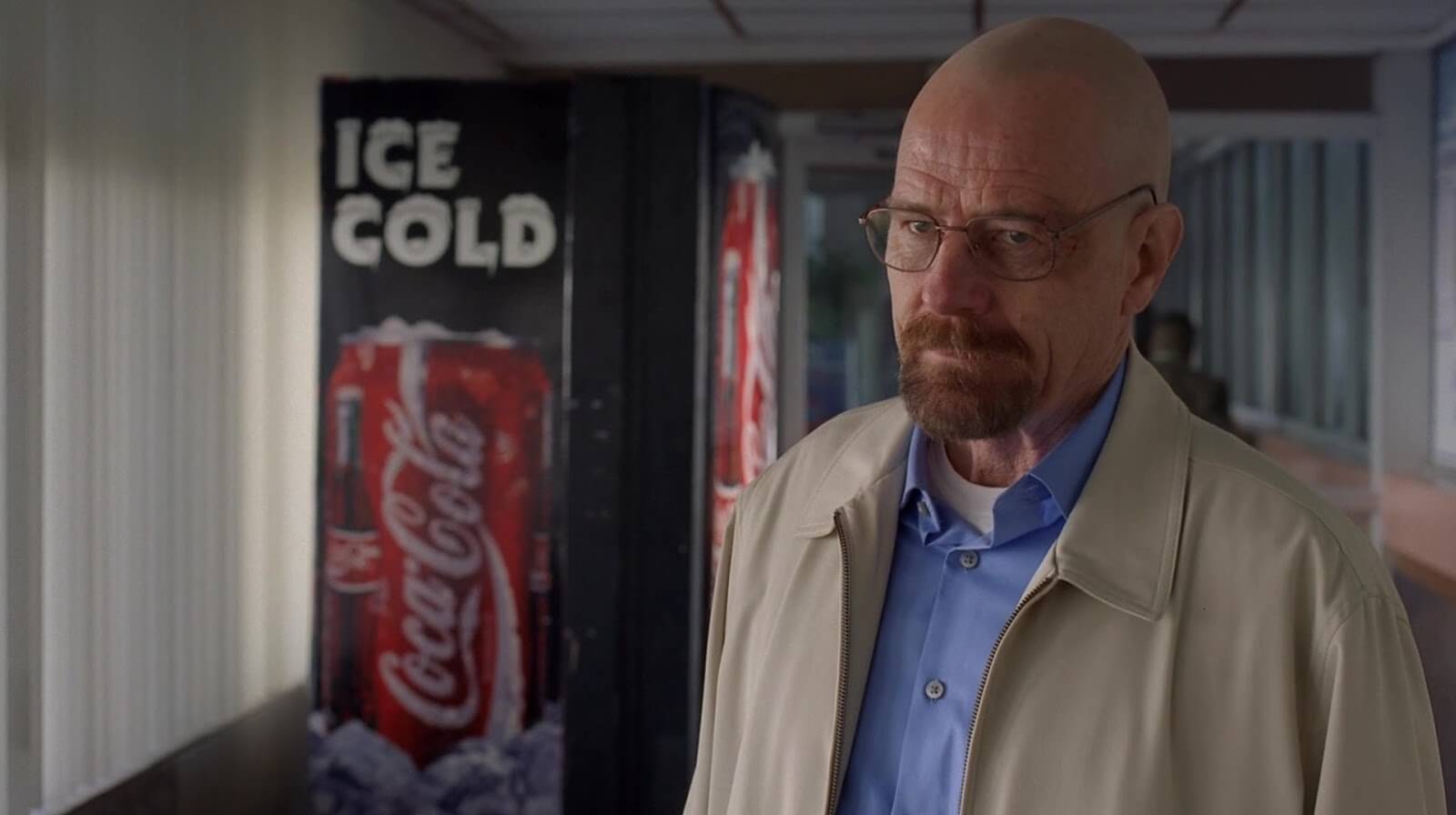

Breaking Bad habits is important with product placement
Also, when you come in with an offer like this, most people don’t understand that your short film won’t make them famous. When they’re still not listed in the town’s ‘film locations tour’ a year after your short film hits YouTube, they might be disappointed.
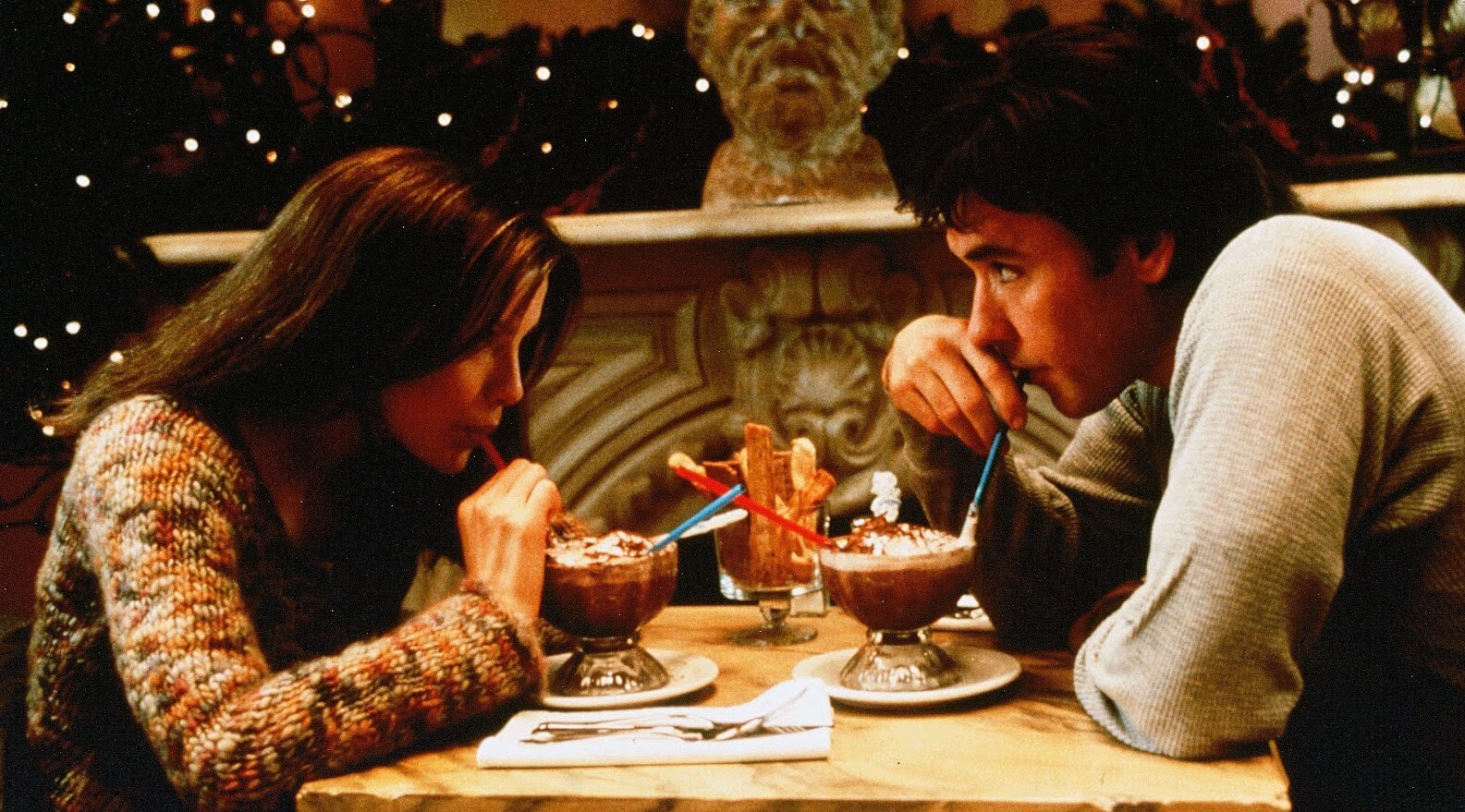

Sharing “Frozen Hot Chocolate” made getting the branding like Serendipity at this restaurant
If we disappoint enough location owners, we’re going to find it harder and harder to get a production in. That’s why most locations charge so much in major filming regions like Los Angeles and New York.
Get Your Deal in Writing
Agreements in stone
Regardless of whether or not the location owner is a friend, you should lock in your filming location in writing just as you would production insurance. For this, it is essential to use a film location release form and understand what you’re signing or get a Location Manager who does.
What a location manager is good for
A location release form defines the parameters of your agreement with the location owner. It helps ensure that everyone is on the same page when it comes to your schedule and how your production will operate on the premises.
The location release form also gives you permission to depict the location in your film as you see fit.
With a signed location release form, your production is less likely to get shut down by a jittery location owner.
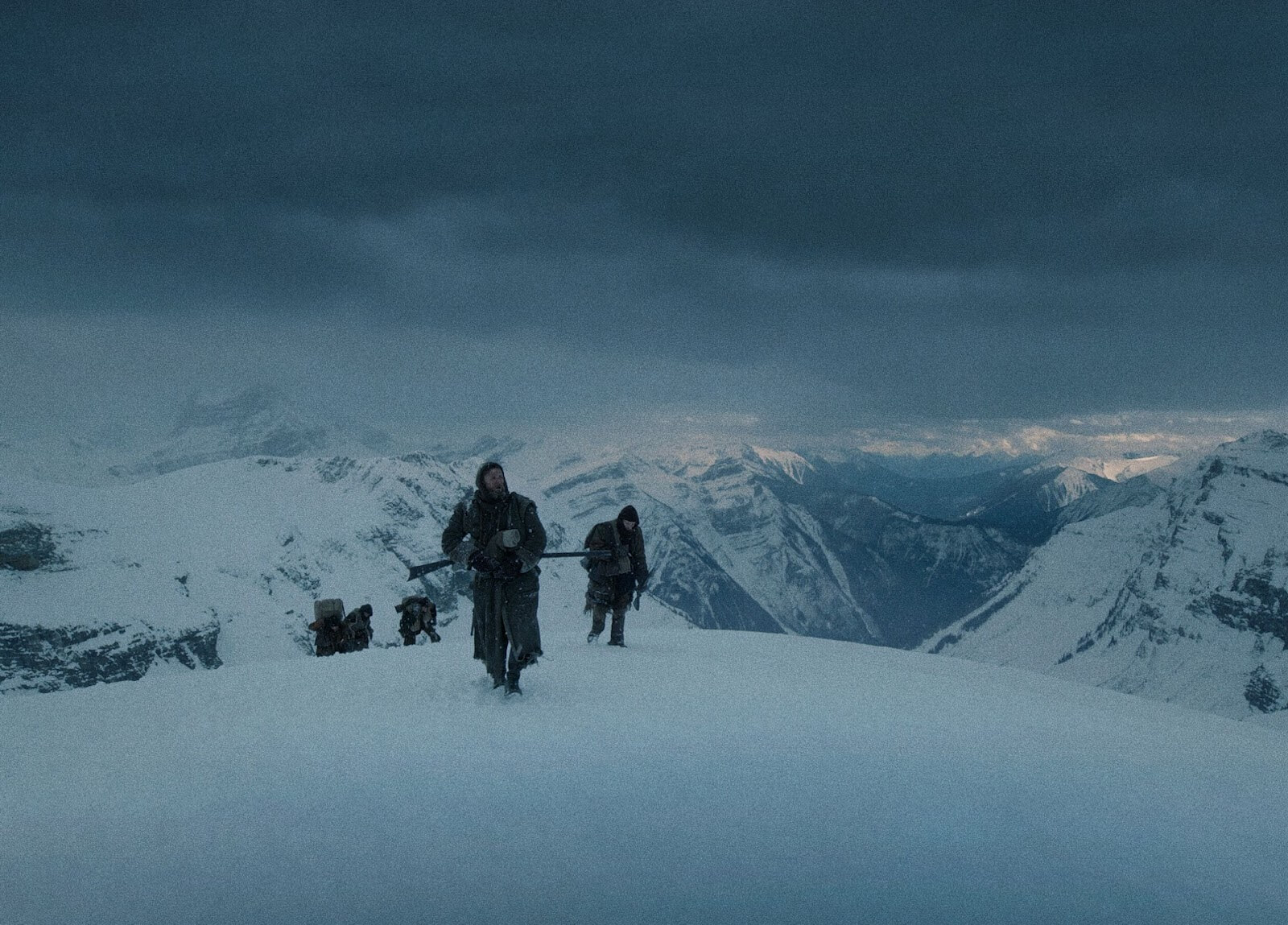

The Revenant used a relatively out of the way location for safety
But be warned! If you’re making a short film, you are vulnerable. I produced a short film in Massachusetts many years ago. We shot in a motel out near Foxboro. We had a signed location release form, and we paid the location owner a modest amount for the use of the motel.
Halfway through our shoot day, the location owner got jittery. She started yelling at our director that she wanted us to leave, or she’d call the police.
We were a tiny team, just 7 or 8 people. No money, no lawyers to call. The agreement didn’t matter. We had to pack up and leave.
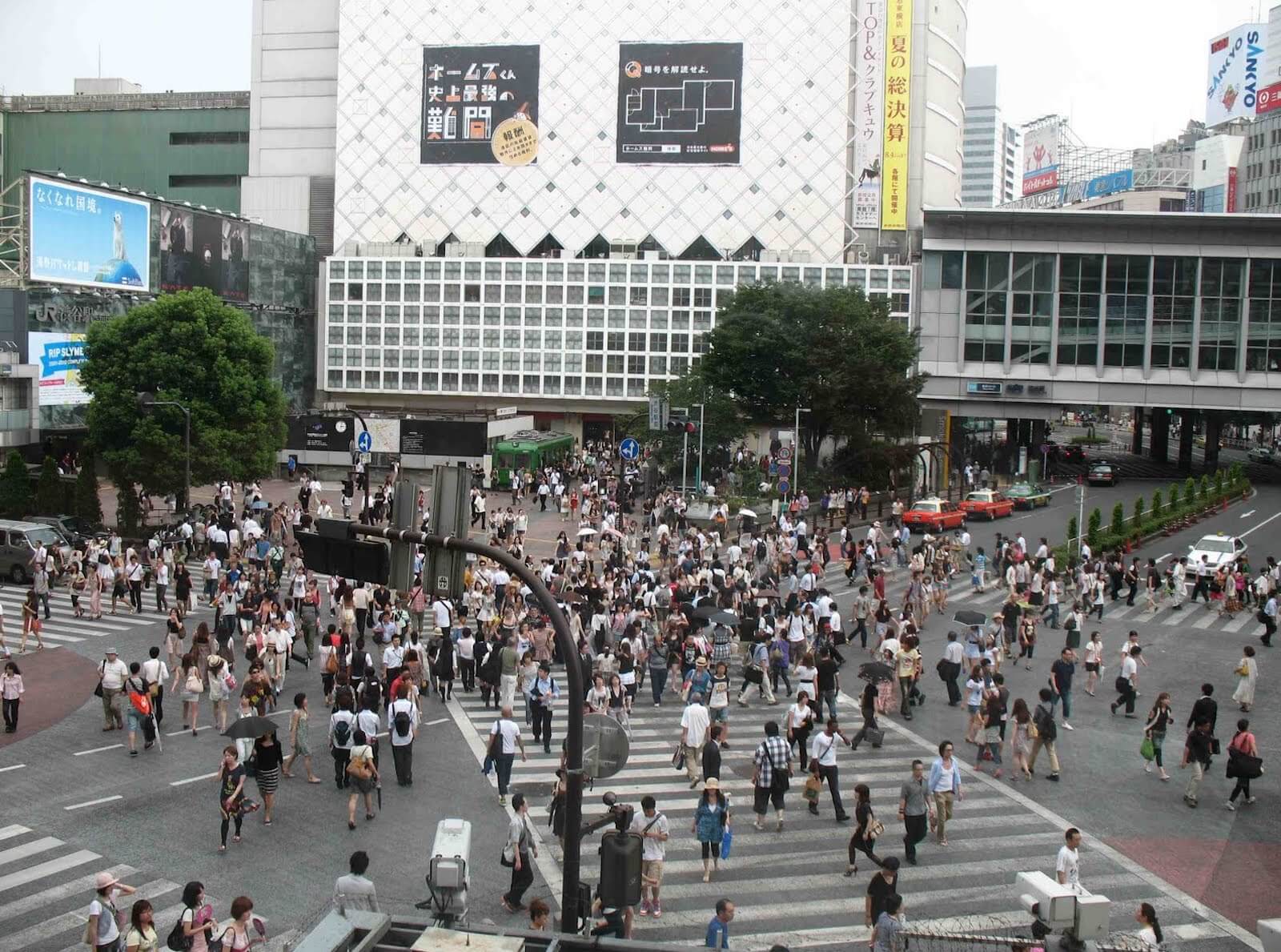

Lost In Translation used this location with and without permits
Fortunately, the director followed standard filmmaking protocol and got his wide shots first. For the close-ups, we spray-painted cardboard to match the motel’s wall color and shot the rest of the scene in a different location.
Related Posts
Permit Papers
Are you permitted?
There could be a whole book written about filming permits. They can be expensive, and the rules can vary from one city to the next.
In Los Angeles, whether you’re indoors or out in public, you’re required to have a filming permit. It can set you back at least a few hundred through FilmLA.
A few miles away, in Santa Monica, the rules change if you contain your entire production to a private location. As long as no trucks are parked on the street, and your equipment doesn’t block anything, you don't need a permit at all.
Just east of Los Angeles, in Riverside County, most filming requires a permit, but filming permits are free! And if you need to shoot on county property, the county may even waive the location fee.
What does FilmLA do for filmmakers?
So, two productions just a few miles apart could face wildly different permitting requirements. If you do need a filming permit, make sure you begin the process early! In Los Angeles, FilmLA typically turns permits around within a few days (assuming there are no complications to the process).
But not all permitting agencies are quick. I worked on a large production once that built sets in a warehouse in Pico Rivera, a Los Angeles suburb.
When it came time to pull filming permits, we found out that Pico Rivera takes at least two weeks to turn a filming permit around! And there was no way to expedite the process!
How to get a film permit for your location if you are a student
We couldn’t pull permits in Pico Rivera fast enough, but if we shot in LA, we could get permits from FilmLA in time. So the production first got a permit to film in LA. Sets were disassembled and loaded onto trucks to go to a rented soundstage within FilmLA’s jurisdiction. Then we reassembled the sets there.
Free downloadable bonus
Download FREE Location Tech Scouting Checklist
Are you getting close to your next location tech scout? We've put together a checklist to help you identify the key elements to look out for before you actually lock down the location. Download our FREE, printable checklist PDF today!




Steal Locations Wisely
Run and gun locations
When I started making movies as a kid, I did this all the time without realizing what I was doing.
I’d show up somewhere with a video camera and some friends, we’d stage a scene, shoot it, and leave. No permission, no location release form, no permit.
Sure, it was Massachusetts, so people were pretty relaxed about it, but if anyone had insisted we stop filming, they would have been right to do so.
So if you are going to “run and gun” here are some tips from my younger years.
RUN AND GUN DEFINITION
What is "Run and Gun" shooting?
“Run and Gun” shooting is filming audio-visual content without any of the necessary paperwork or preparation that goes into a normal film production. Any filmmaking done on the move or guerilla-style.
The “Rules” For Run and Gun Filmmaking
- Limit your production footprint: bring as few people to the location as possible. Don’t use their power or water. If you can, don’t even set down a tripod or light stand.
- Don’t dawdle: Get the shots you need and get out.
- Respect the Property: Don’t break anything. Don’t even mark anything.
- Leave it in Better Condition: Take the trash out when you leave.
- If you are caught, acknowledge what you’re doing. Don’t play dumb. And don’t try to buy time. Just leave. It’s the price you pay for risking a “guerilla” shoot.
Wherever possible, get permission to film where you’re filming. By all means plan on a few backup locations, in case you get kicked out of the first one.
Once again, this is not an ideal way to film anything. Avoid it if you can!
Your filming locations really set the tone for your production. You can serve your story, budget, and production if you take the right steps.
Just in case you didn’t catch what a location scout entails
So take your time with your location scouting process. Assess your options carefully. The selection of your filming location is actually one of the bigger choices that you and your team will make during pre production.
Keep the checklist handy as you begin location scouting. Also consider how to start securing the locations once you find them. With these steps in place, you’ll be even closer to day one of production.
RELATED POSTS
UP NEXT
The Ultimate Pre-Production Guide
Scouting locations is just one piece of the pre production puzzle. If you want to produce a movie, there are many more steps just in pre production alone that need to be tasked and executed. Let’s dive deeper into the pre production process, and see how using StudioBinder makes this undertaking a bit simpler.
Up Next: Pre Production Checklist →
Project management for video creatives. Tasks, file sharing, calendars and more.
Manage video production timelines, tasks, storyboards, shot lists, breakdowns, call sheets. Made for video creatives, new media and film.
